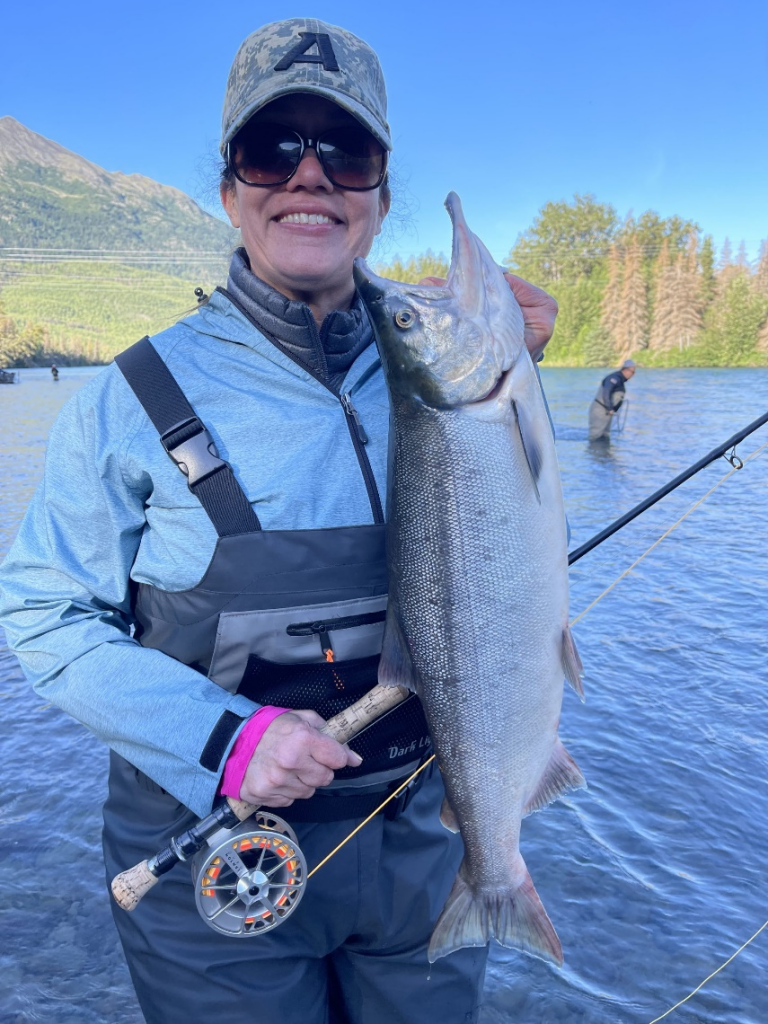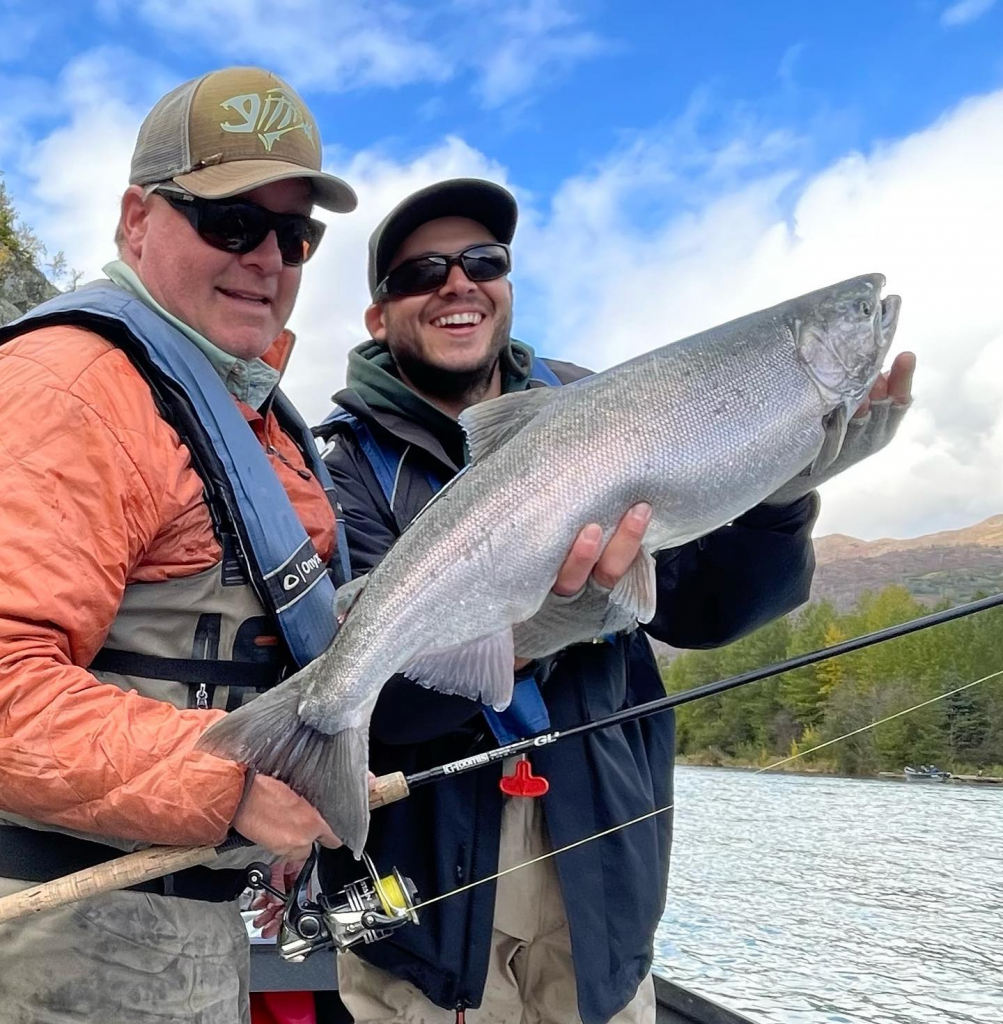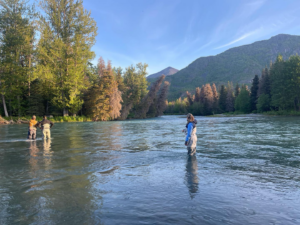Welcome to the Kenai River: a place where the waters run as deep as the stories of the fish caught within them.
This isn’t your lazy Sunday fishing pond; it’s Alaska’s premier battleground where seasoned anglers and spirited rookies alike test their skills. A successful Kenai River fishing trip hinges on strategic thinking, keen eyes, and a bit of good old-fashioned grit. You’re not just fishing; you’re outsmarting some of the most sought-after catches in the world.
Let’s roll up our sleeves and dive into the nitty-gritty of scouting the ultimate fishing spots on the Kenai River. This guide will give you the straight shot on how to conquer the Kenai’s thrilling waters.
Knowing the River: Understanding Kenai’s Moods
To master fishing on the Kenai River, you need to understand its moods and whims. This river isn’t just a body of water; it’s a living ecosystem with its own set of rules.
The Kenai can be as calm as a sleeping bear one moment and as ferocious as a raging bull the next. Knowing its moods means understanding how the weather, the seasons, and even the time of day can affect its waters.
In the summer, the Kenai can run high and fast, filled with the melting snow from the mountains. But it can also turn tricky with strong currents that challenge even the most seasoned anglers.
Come fall, the river calms down a bit, offering a different kind of fishing experience with rainbow trout and silver salmon becoming the main attractions.
Understanding the Kenai also means paying attention to the smaller details: the way the water flows around rocks and bends, the spots where currents meet and create ideal fishing holes, and the depth at which fish prefer to swim at different times of the year.
It’s about becoming one with the river, tuning into its rhythm, and using that knowledge to your advantage.
Timing is Everything

When it comes to fishing on the Kenai, the right timing is as crucial as your choice of bait. You could have all the gear and know-how, but if you’re not there at the right time, you might as well be casting into a desert.
The Kenai’s salmon runs are legendary. Hitting these periods right can be the difference between an epic haul and coming up empty.
Silver salmon take the stage in late summer and early fall. These fish are fighters and can turn a good fishing day into an unforgettable one.
Timing also plays into the daily rhythm of the river; early mornings and late evenings are often the best times to catch fish (as they tend to feed more actively during these hours).
Choosing Your Gear Wisely
In the rugged world of Kenai River fishing, your gear is your closest ally. This is no place for flimsy rods and bargain-bin tackle. When you’re battling the likes of the Kenai’s salmon, you need gear that’s as tough and reliable as you are.
Start with a rod that can handle the fight: something sturdy yet sensitive enough to feel every nibble and tug. Pair it with a reel that’s smooth, strong, and capable of holding its own against the river’s powerful currents and the thrashing of a hefty salmon. Your line needs to be just as robust; it must be able to withstand abrasion against rocks and debris.
Your choice of bait and lures is also important. The Kenai’s fish are savvy and can be picky eaters. Take some time and do your research, or, better yet, talk to the locals and Cooper Landing Fly Fishing Guides who know what works best in these waters. The right lure can make all the difference!
And let’s not forget about waders and boots. The Kenai’s waters are cold, and its banks can be treacherous. High-quality waterproof waders and boots with non-slip soles are non-negotiable for both comfort and safety.
Reading the Water: Signs of a Hot Spot

Finding the perfect spot on the Kenai River isn’t just luck; it’s a skill honed by keen observation and experience.
To the trained eye, the river speaks volumes. Anglers must master the art of reading the water for signs that scream, ‘fish are here!’ Look for areas where the current breaks (like behind large rocks or downed trees). These spots create natural resting places for fish conserving energy; they’re ideal for casting your line.
Eddies and pools are also prime real estate in the river. Eddies, where the water swirls back on itself, often hold fish feeding on the buffet of insects caught in the circular current. Pools, especially those deeper ones following a rapid stretch, are like the Kenai’s VIP lounges for fish. They offer respite from the river’s relentless flow and are a good bet for finding some of the bigger catches.
Another telltale sign of a hot spot is observing wildlife. Birds diving into the water can indicate schools of small fish (which, in turn, attract bigger fish). It’s the Kenai’s own version of a dinner bell! Pay close attention to insect activity. Hatches can signify prime feeding times and cleverly attract fish to the surface.
Keep in mind that reading the water is an art form that blends science with a dash of gut feeling. It’s ultimately developed through time spent on the river and a deep understanding of its ways.
The Role of a Fishing Guide
A fishing guide is worth their weight in gold, or in this case, salmon. These aren’t just people who show you where to fish; they’re masters of their craft.
A good guide, like those from Jason’s Guide Service, will not only put you on the fish but also teach you the ins and outs of the river. They know the Kenai’s moods and rhythms, the best spots for each season, and the right techniques for every kind of fish.
Fishing guides handle the nitty-gritty details: navigating the river’s tricky spots, setting up gear tailored to the day’s conditions, and so much more. They’re your safety net; they keep an eye out for any changes in the weather or river conditions that could affect your day. They go the extra mile to make your Kenai River fishing trip both safe and hassle-free.
Furthermore, guides share stories and knowledge about the river’s ecology and history, enriching your understanding of the Kenai. They teach the importance of respecting and preserving this incredible natural resource.
Respect the River: Safety and Conservation
Safety on the Kenai is a matter of common sense: wearing a life vest when in a boat, being aware of your surroundings, and understanding your limits (especially in challenging conditions).
It also means being prepared. The weather on the Kenai can change on a dime. Having the right gear and knowing how to use it is imperative. Always let someone know your fishing plans and expected return (especially if you’re venturing into less populated areas).
Conservation is equally important. The Kenai is not just a fishing destination; it’s a vital ecosystem. Practice catch and release (especially with native species like rainbow trout). Be mindful of local regulations and limits; they’re there to ensure the Kenai keeps teeming with life for generations to come.
Finally, leave no trace. This means everything you bring in, you take out. Keep the Kenai pristine to ensure that its waters continue to flow clear and its fish continue to thrive.
Start Planning Your Upcoming Fishing Trip with Jason’s Guide Service

Aching for a Kenai River fishing trip? We can make it happen! At Jason’s Guide Service, we plan a range of fishing trips for both new and seasoned anglers. Whether you’re in the mood for a guided rainbow trout trip in Kenai River, a guided silver salmon fishing expedition, or catch and release, we’d be more than happy to plan your upcoming trip. Book now!

















